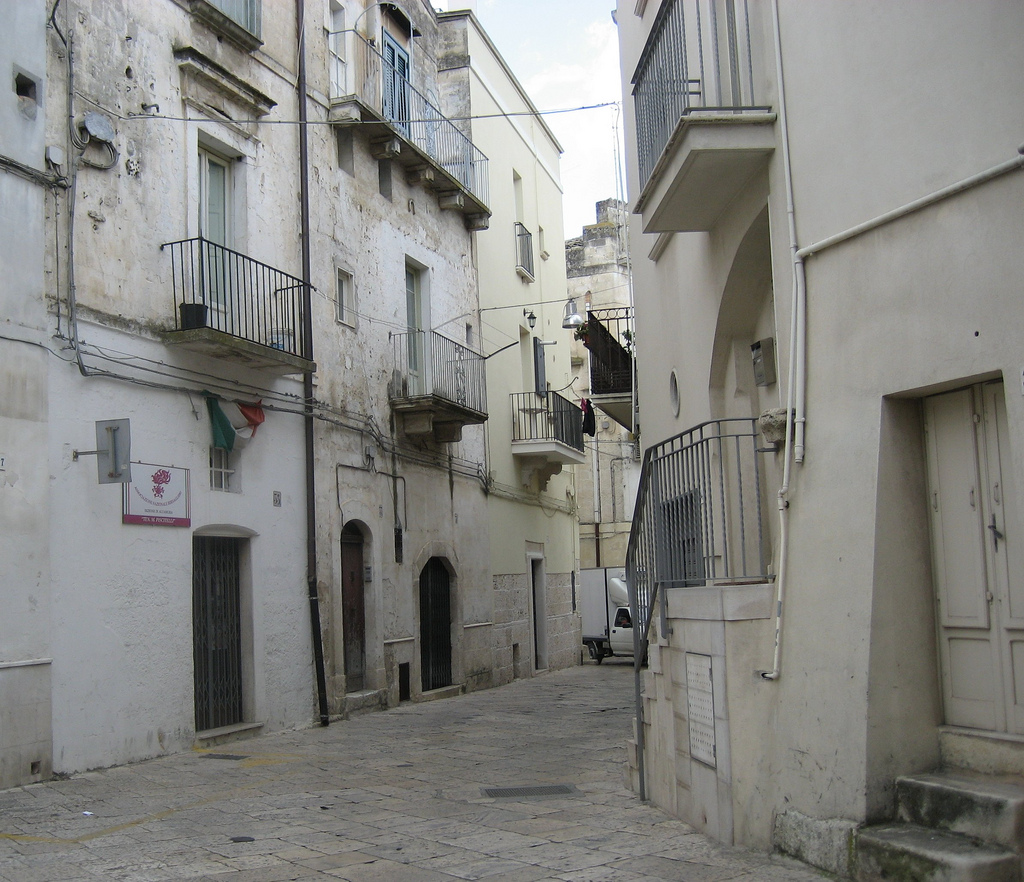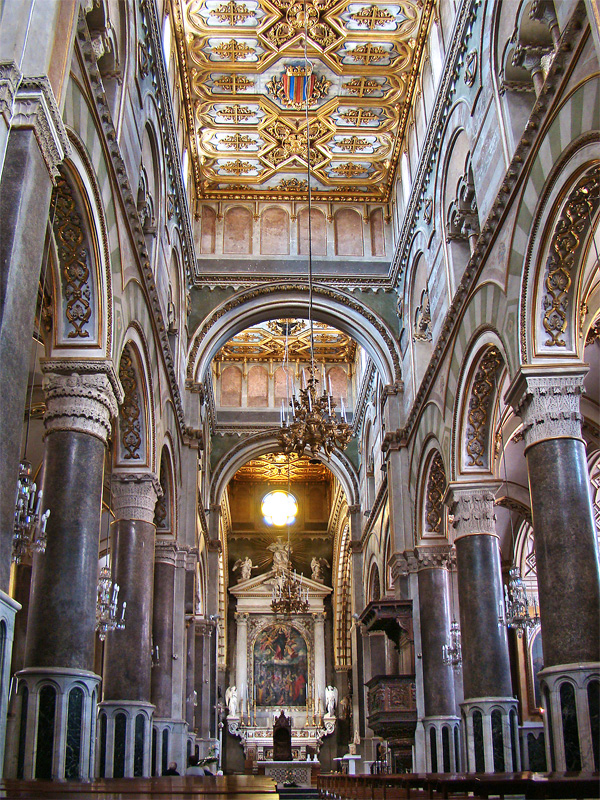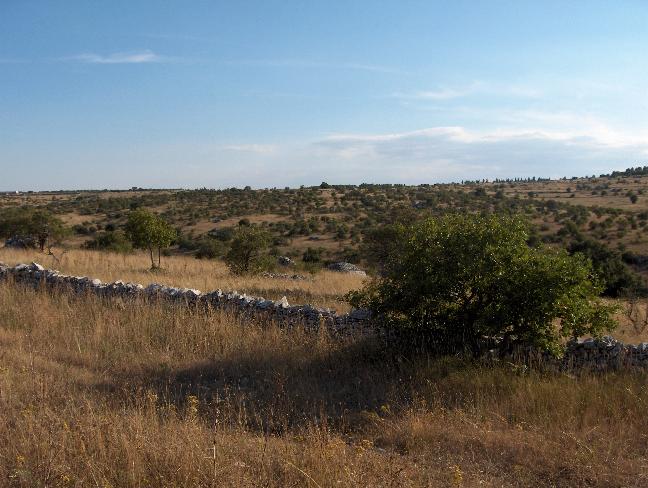|
Altamura
Altamura (, ; nap, label=Bari dialect, Barese, Ialtamùre) is a town and ''comune'' of Apulia, in southern Italy. It is located on one of the hills of the Altopiano delle Murge, Murge plateau in the Metropolitan City of Bari, southwest of Bari, close to the border with Basilicata. , its population amounts to 70,595 inhabitants. The city is known for its particular quality of bread called Pane di Altamura, which is sold in numerous other Italian cities. The 130,000-year-old calcified Altamura Man was discovered in 1993 in the nearby limestone cave called ''grotta di Lamalunga''. History The area of modern Altamura was densely inhabited in the Bronze Age (La Croce settlement and necropolis). The region contains some fifty Tumulus, tumuli. Between the 6th and the 3rd century BC a massive line of megalithic walls was erected, traces of which are still visible in some areas of the city. Ancient city The city was inhabited until around the tenth century AD. Then it was reporte ... [...More Info...] [...Related Items...] OR: [Wikipedia] [Google] [Baidu] |
Altamura Street2
Altamura (, ; nap, label= Barese, Ialtamùre) is a town and ''comune'' of Apulia, in southern Italy. It is located on one of the hills of the Murge plateau in the Metropolitan City of Bari, southwest of Bari, close to the border with Basilicata. , its population amounts to 70,595 inhabitants. The city is known for its particular quality of bread called Pane di Altamura, which is sold in numerous other Italian cities. The 130,000-year-old calcified Altamura Man was discovered in 1993 in the nearby limestone cave called ''grotta di Lamalunga''. History The area of modern Altamura was densely inhabited in the Bronze Age (La Croce settlement and necropolis). The region contains some fifty tumuli. Between the 6th and the 3rd century BC a massive line of megalithic walls was erected, traces of which are still visible in some areas of the city. Ancient city The city was inhabited until around the tenth century AD. Then it was reportedly looted by Saracens. There are no ... [...More Info...] [...Related Items...] OR: [Wikipedia] [Google] [Baidu] |
Altamura Cathedral
Altamura Cathedral ( it, Duomo di Altamura, ''Cattedrale di Santa Maria Assunta''), dedicated to the Assumption of the Blessed Virgin Mary, is a Roman Catholic cathedral in the city of Altamura, in the Metropolitan City of Bari, Apulia, in southern Italy. Since 1986 it has been the seat of the Bishop of Altamura-Gravina-Acquaviva delle Fonti, formed in that year. Previously it was the church of the territorial prelature of Altamura (from 1848, Altamura e Acquviva delle Fonti). History The church was built by will of emperor Frederick in 1232-1254. The main gate, the portal, the rose window were all on the opposite side that in today's construction, while the altar was located in the area where the main gate is now. In 1248, under pressure from Frederick, Pope Innocent IV declared Altamura exempt from the jurisdiction of the bishop of Bari, making it a "palatine" church, one of four in Apulia. Historian Domenico Santoro (1688) hypothesized that the church may occupy the ... [...More Info...] [...Related Items...] OR: [Wikipedia] [Google] [Baidu] |
Altamura Man
The Altamura Man is a fossil of the genus ''Homo'' discovered in 1993 in a karst sinkhole in the Lamalunga Cave near the city of Altamura, Italy. Remarkably well preserved but covered in a thick layer of calcite taking the shape of cave popcorn the find was left in situ in order to avoid damage. Research during the following twenty years was based mainly on the documented on-site observations. Consequently, experts remained reluctant to agree on a conclusive age nor was there consensus on the species it belonged to. Only after a fragment of the right scapula (shoulder blade) was retrieved was it possible to produce an accurate dating of the individual, an analysis and diagnostic of its morphological features, and a preliminary paleogenetic characterization. In a 2015 paper published in the ''Journal of Human Evolution,'' it was announced that the fossil was a Neanderthal, and dating of the calcite has revealed that the bones are between 128,000 and 187,000 years old. Altamura ... [...More Info...] [...Related Items...] OR: [Wikipedia] [Google] [Baidu] |
Pane Di Altamura
Pane di Altamura is a type of Italian naturally leavened bread made from remilled durum wheat semola from the Altamura area of the Provincia di Bari, in the Apulia region. In 2003 ''Pane di Altamura'' was granted PDO status within Europe. By law, it must be produced according to a range of strict conditions, including using particular varieties of durum wheat (all locally produced), a certain specification of water, a consistent production method, and must also have a final crust that is at least 3 mm thick. The shape of the bread is not essential for a loaf to be certified, but there are some traditional shapes. Official production zone consists of the Comuni of: * Altamura * Gravina in Puglia * Laterza * Matera * Poggiorsini * Santeramo in colle * Spinazzola * Minervino Murge See also * Altamura * Altamura Man The Altamura Man is a fossil of the genus ''Homo'' discovered in 1993 in a karst sinkhole in the Lamalunga Cave near the city of Altamura, Italy. ... [...More Info...] [...Related Items...] OR: [Wikipedia] [Google] [Baidu] |
Santeramo In Colle
Santeramo in Colle ( Santermano: ) is a town in the Metropolitan City of Bari and region of Apulia, southern Italy. Its current name comes from St Erasmus, martyr of the Diocletian era and patron saint of the city who, according to legend, is responsible for its founding. Physical geography By altitude, Santeramo in Colle is the highest municipality in the metropolitan city of Bari. The countryside has the typical geomorphological features of the karst territory: a limestone substrate, with rocky out croups and the presence of lamas (Lamalunga, Lamadavruscio, Lamadispina, Lamasinara, Lamadilupo), jazzi (Iazzitello, Iazzo vecchio, Iazzo Sava, Iazzo De Laurentiis, Iazzo De Luca), Sinkhole e Ponor, courts (Corte Finocchio, Curtocarosino, Curtolevacche, Curtopasso, Curtolafica), parks (Parco Giovanni, Parco Lanzano, Parconuovo, Parco del Trullo, Parco Sava, Parco Caldara), lakes (Lago Travato, Lagolupino, Lagolaguardia, Lagopalumbo, Lacometana), mountains (Montefungale, Montefreddo) ... [...More Info...] [...Related Items...] OR: [Wikipedia] [Google] [Baidu] |
Altopiano Delle Murge
The Altopiano delle Murge (Italian for "Murge plateau") is a karst topographic plateau of rectangular shape in southern Italy. Most of it lies within Apulia and corresponds with the sub-region known as Murgia or Le Murge. The plateau lies mainly in the Metropolitan City of Bari and the province of Barletta-Andria-Trani, but extends into the provinces of Brindisi and Taranto to the south, and into Matera in Basilicata to the west. The name is believed to originate from the Latin ''murex'', meaning "sharp stone". Geography and geology The Murge plateau covers a surface of some 4,000 km², bordered by the Ofanto river and the Tavoliere delle Puglie to the north, the Adriatic Sea to the northeast, and by the Messapic depression, which separates it from the Salento peninsula, to the south. It is usually divided into Alta Murgia (High Murgia), the highest area, with poorer vegetation, and Bassa Murgia (Lower Murgia), with more fertile land, extensively planted with olive-trees f ... [...More Info...] [...Related Items...] OR: [Wikipedia] [Google] [Baidu] |
Bari
Bari ( , ; nap, label= Barese, Bare ; lat, Barium) is the capital city of the Metropolitan City of Bari and of the Apulia region, on the Adriatic Sea, southern Italy. It is the second most important economic centre of mainland Southern Italy after Naples. It is a port and university city, as well as the city of Saint Nicholas. The city itself has a population of 315,284 inhabitants, over , while the urban area has 750,000 inhabitants. The metropolitan area has 1.3 million inhabitants. Bari is made up of four different urban sections. To the north is the closely built old town on the peninsula between two modern harbours, with the Basilica of Saint Nicholas, the Cathedral of San Sabino (1035–1171) and the Hohenstaufen Castle built for Frederick II, which is now also a major nightlife district. To the south is the Murat quarter (erected by Joachim Murat), the modern heart of the city, which is laid out on a rectangular grid-plan with a promenade on the sea and the ... [...More Info...] [...Related Items...] OR: [Wikipedia] [Google] [Baidu] |
Bari Dialect
Bari ( , ; nap, label= Barese, Bare ; lat, Barium) is the capital city of the Metropolitan City of Bari and of the Apulia region, on the Adriatic Sea, southern Italy. It is the second most important economic centre of mainland Southern Italy after Naples. It is a port and university city, as well as the city of Saint Nicholas. The city itself has a population of 315,284 inhabitants, over , while the urban area has 750,000 inhabitants. The metropolitan area has 1.3 million inhabitants. Bari is made up of four different urban sections. To the north is the closely built old town on the peninsula between two modern harbours, with the Basilica of Saint Nicholas, the Cathedral of San Sabino (1035–1171) and the Hohenstaufen Castle built for Frederick II, which is now also a major nightlife district. To the south is the Murat quarter (erected by Joachim Murat), the modern heart of the city, which is laid out on a rectangular grid-plan with a promenade on the sea and the ... [...More Info...] [...Related Items...] OR: [Wikipedia] [Google] [Baidu] |
Metropolitan City Of Bari
The Metropolitan City of Bari ( it, Città Metropolitana di Bari) is a Metropolitan cities of Italy, metropolitan city in the Apulia region of Italy. Its capital is the city of Bari. It replaced the Province of Bari and includes the city of Bari and some forty other municipalities (''comuni''). It was first created by the Metropolitan cities of Italy, reform of local authorities (Law 142/1990) and then established by the Law 56/2014. It has been operative since January 1, 2015. The Metropolitan City of Bari is headed by the Metropolitan Mayor (''Sindaco metropolitano'') and by the Metropolitan Council (''Consiglio metropolitano''). Since 1 January 2015 Antonio Decaro, as mayor of the capital city, has been the first mayor of the Metropolitan City. It has an area of , and a total population of 1,261,152 (2014). Geography Overlooking the Adriatic Sea in south-eastern Italy, the Province of Bari is located in the central part of Apulia and is bordered on the west by the provinces of ... [...More Info...] [...Related Items...] OR: [Wikipedia] [Google] [Baidu] |
Comune
The (; plural: ) is a local administrative division of Italy, roughly equivalent to a township or municipality. It is the third-level administrative division of Italy, after regions ('' regioni'') and provinces (''province''). The can also have the title of ('city'). Formed '' praeter legem'' according to the principles consolidated in medieval municipalities, the is provided for by art. 114 of the Constitution of Italy. It can be divided into ''frazioni'', which in turn may have limited power due to special elective assemblies. In the autonomous region of the Aosta Valley, a ''comune'' is officially called a ''commune'' in French. Overview The provides essential public services: registry of births and deaths, registry of deeds, and maintenance of local roads and public works. Many have a '' Polizia Comunale'' (communal police), which is responsible for public order duties. The also deal with the definition and compliance with the (general regulator plan), a docu ... [...More Info...] [...Related Items...] OR: [Wikipedia] [Google] [Baidu] |
Basilicata
it, Lucano (man) it, Lucana (woman) , population_note = , population_blank1_title = , population_blank1 = , demographics_type1 = , demographics1_footnotes = , demographics1_title1 = , demographics1_info1 = , demographics1_title2 = , demographics1_info2 = , demographics1_title3 = , demographics1_info3 = , timezone1 = CET , utc_offset1 = +1 , timezone1_DST = CEST , utc_offset1_DST = +2 , postal_code_type = , postal_code = , area_code_type = ISO 3166 code , area_code = IT-77 , blank_name_sec1 = GDP (nominal) , blank_info_sec1 = €12.6 billion (2018) , blank1_name_sec1 = GDP per capita , blank1_info_sec1 = €22,200 (2018) , blank2_name_sec1 = HDI (2018) , blank2_info_sec1 = 0.853 · 17th of 21 , blank_name_sec2 = NUTS Region , blank_info_sec2 = ITF , ... [...More Info...] [...Related Items...] OR: [Wikipedia] [Google] [Baidu] |
Troy
Troy ( el, Τροία and Latin: Troia, Hittite: 𒋫𒊒𒄿𒊭 ''Truwiša'') or Ilion ( el, Ίλιον and Latin: Ilium, Hittite: 𒃾𒇻𒊭 ''Wiluša'') was an ancient city located at Hisarlik in present-day Turkey, south-west of Çanakkale and about miles east of the Aegean Sea. It is known as the setting for the Greek myth of the Trojan War. In Ancient Greek literature, Troy is portrayed as a powerful kingdom of the Heroic Age, a mythic era when monsters roamed the earth and gods interacted directly with humans. The city was said to have ruled the Troad until the Trojan War led to its complete destruction at the hands of the Greeks. The story of its destruction was one of the cornerstones of Greek mythology and literature, featuring prominently in the ''Iliad'' and the ''Odyssey'', and referenced in numerous other poems and plays. Its legacy played a large role in Greek society, with many prominent families claiming descent from those who had fought there. In t ... [...More Info...] [...Related Items...] OR: [Wikipedia] [Google] [Baidu] |







